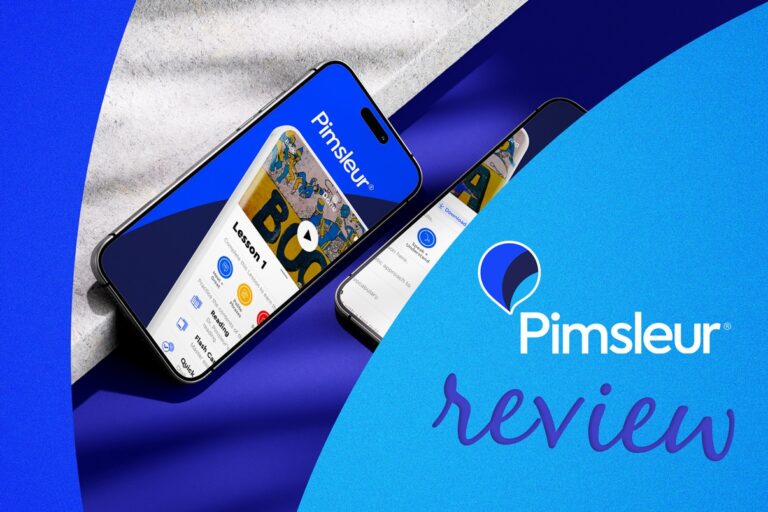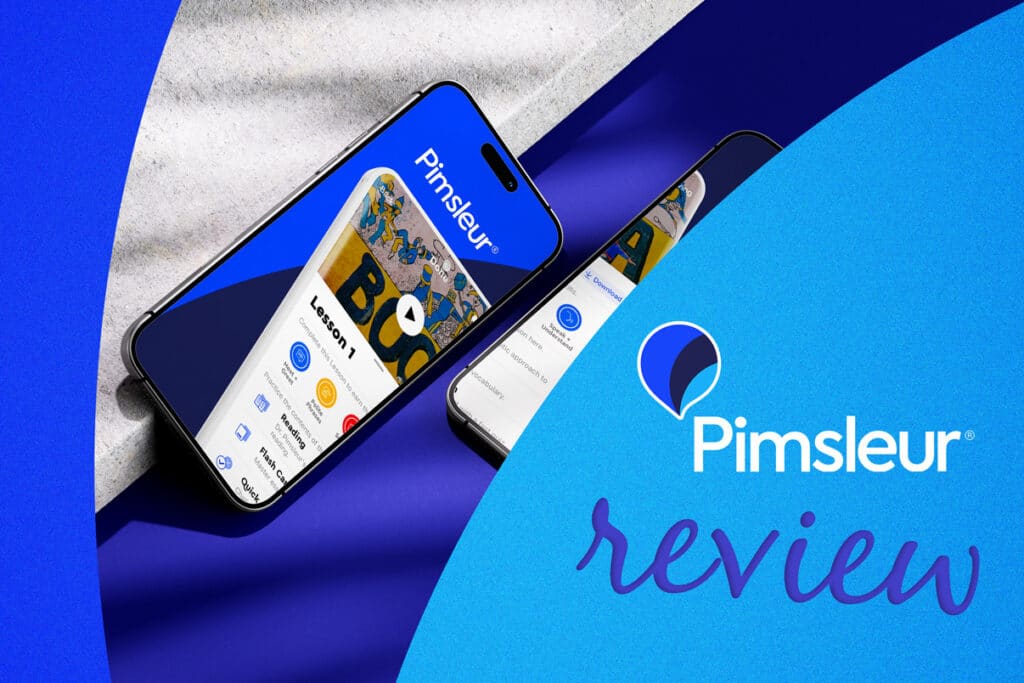
Since 1963, Pimsleur has been teaching languages to millions of students around the world. One of their most used language programs is Spanish, so we thought we’d focus on that for this full review.
But how does the program really work, and can you really learn Spanish with Pimsleur?
To write the most informative and honest Pimsleur Spanish review that I possibly can, I tried the method myself to learn Spanish for two weeks.
What I found was that Pimsleur’s audio content is top notch and effective for beginners, but that the program relies too heavily on English, neglects writing, lacks video and authentic media and isn’t ideal for anyone above an intermediate level of Spanish.
Read on to find out what the Pimsleur Method is, the pros and cons of the Pimsleur program, what it’s really like to use and, finally, if it actually works.
Contents
Download:
This blog post is available as a convenient and portable PDF that you
can take anywhere.
Click here to get a copy. (Download)
What Is the Pimsleur Method?
The Pimsleur method is an audio-based program that focuses on listening and speaking.
By having you listen to and repeat what’s being said, Pimsleur sets out to teach you a language in a natural, seamless way. And through this context of conversations and listening exercises, you’re also introduced to Spanish grammar and vocabulary in context.
The Pimsleur approach was created by Dr. Paul Pimsleur, an influential scholar of applied linguistics. After extensive research, he realized the importance of auditory learning in encouraging adults to achieve similar target language acquisition as children.
The Pimsleur method is based on four principles:
- Anticipation: You have to think before you answer, which is similar to what happens in a real conversation.
- Graduated interval recall: This is basically a fancy term to call spaced repetition. You study concepts/words/rules and revisit them at different time intervals.
- Organic learning: You learn like a child would do, through listening. Grammar, vocabulary, accent and pronunciation are all taught together in the form of listening input.
- Core vocabulary: You learn the vocabulary that’s actually used most by native speakers first.
As you can see, this truly is a method focused on listening and speaking, so if that’s the kind of resource you’re looking for, keep on reading.
What Do Pimsleur Spanish Lessons Look Like?
30-Minute Audio Lessons
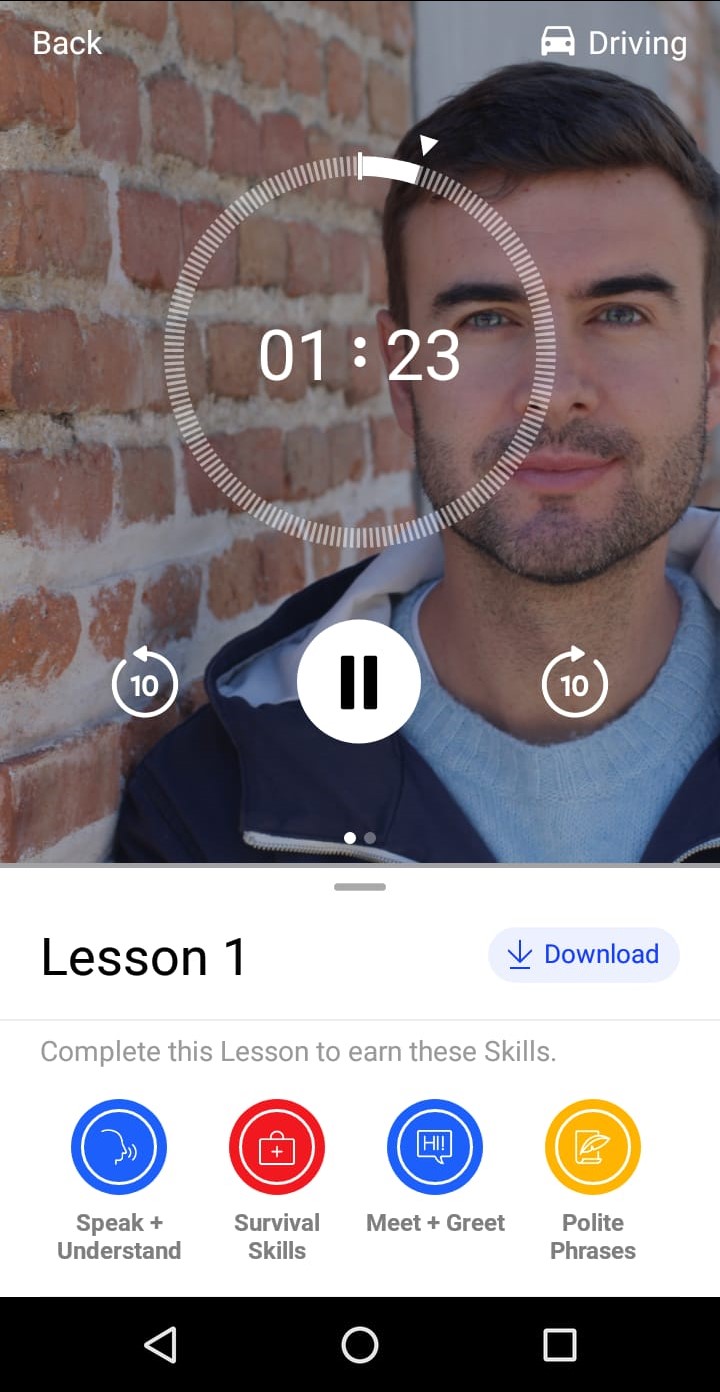
The core of every Pimsleur Spanish lesson is the 30 minutes of audio each of them includes.
Lessons start with a dialogue in native Spanish.
The dialogue is then analyzed and translated, and it’s used as the basis upon which the lesson is built.
The vocabulary of each lesson is repeated, dissected and revisited several times during these 30 minutes, and by the end of the session, you’re supposed to remember the new words and be able to easily recall them when prompted.
- High-quality audio… mainly in English
The downside of these lessons is that, apart from the dialogue at the beginning and the focus on Spanish vocabulary words, all you’ll hear is English.
The quality of the audio is superb despite the longevity of the course, but the amount of native Spanish included in each lesson is very little. - Audio-only lessons won’t let you work on other language skills
The Pimsleur method is fantastic for working on your listening, speaking and conversational skills.However, especially if you purchase the audio-only courses, that’s almost everything you’ll do.
I found skills such as writing and reading to be completely ignored in the audio-only version of the course, and the Premium version only covers reading superficially.
Skills 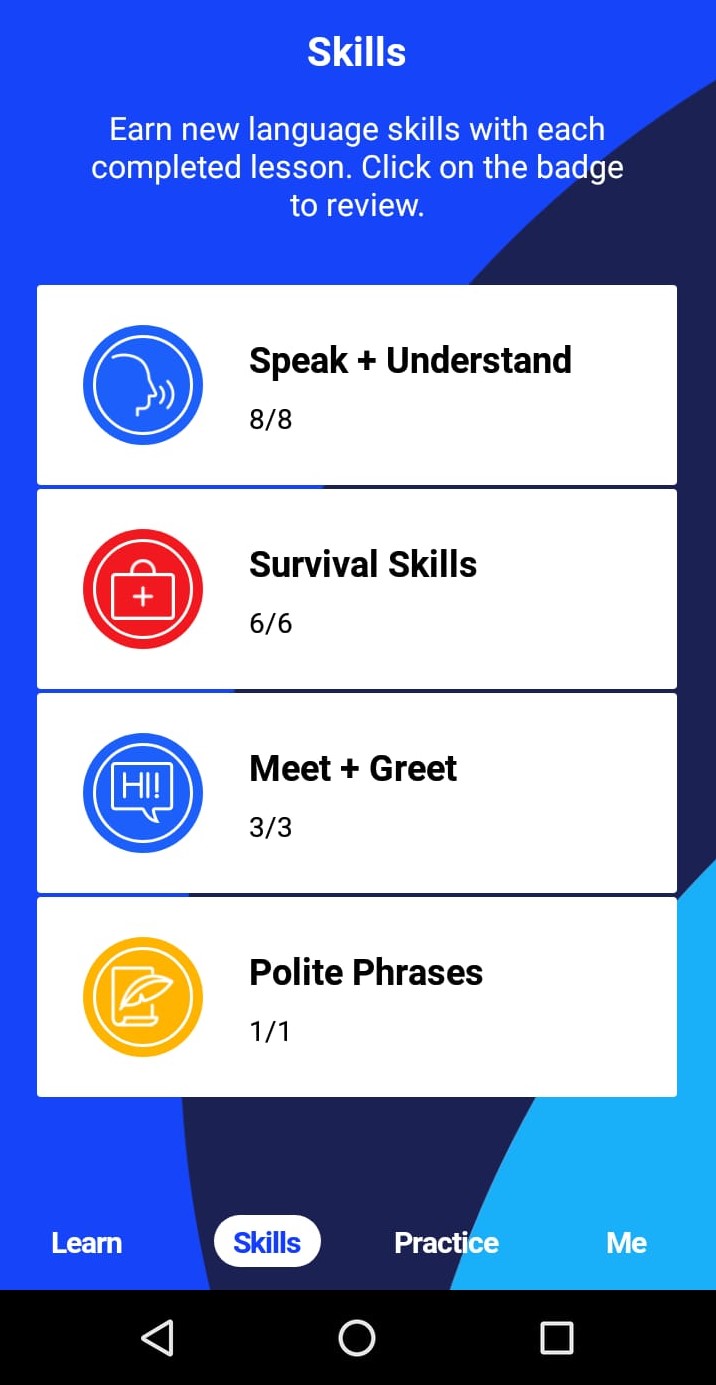
One of my favorite Pimsleur features is the “Skills” section, which, unfortunately, is only available for Premium learners.
In this section, you’ll be able to see the skills you’ll be working on during a lesson, and you can easily click on or tap each skill to see the words and expressions included in that category.
For instance, lesson 1 of the Castilian Spanish course includes four skills: Listen + Understand, Survival Skills, Meet + Greet and Polite Phrases.
The coolest thing about Pimsleur skills is that you’ll be learning more of them as you go, and previous skills will be getting “filled” with new words and phrases as you complete the lessons.
Practice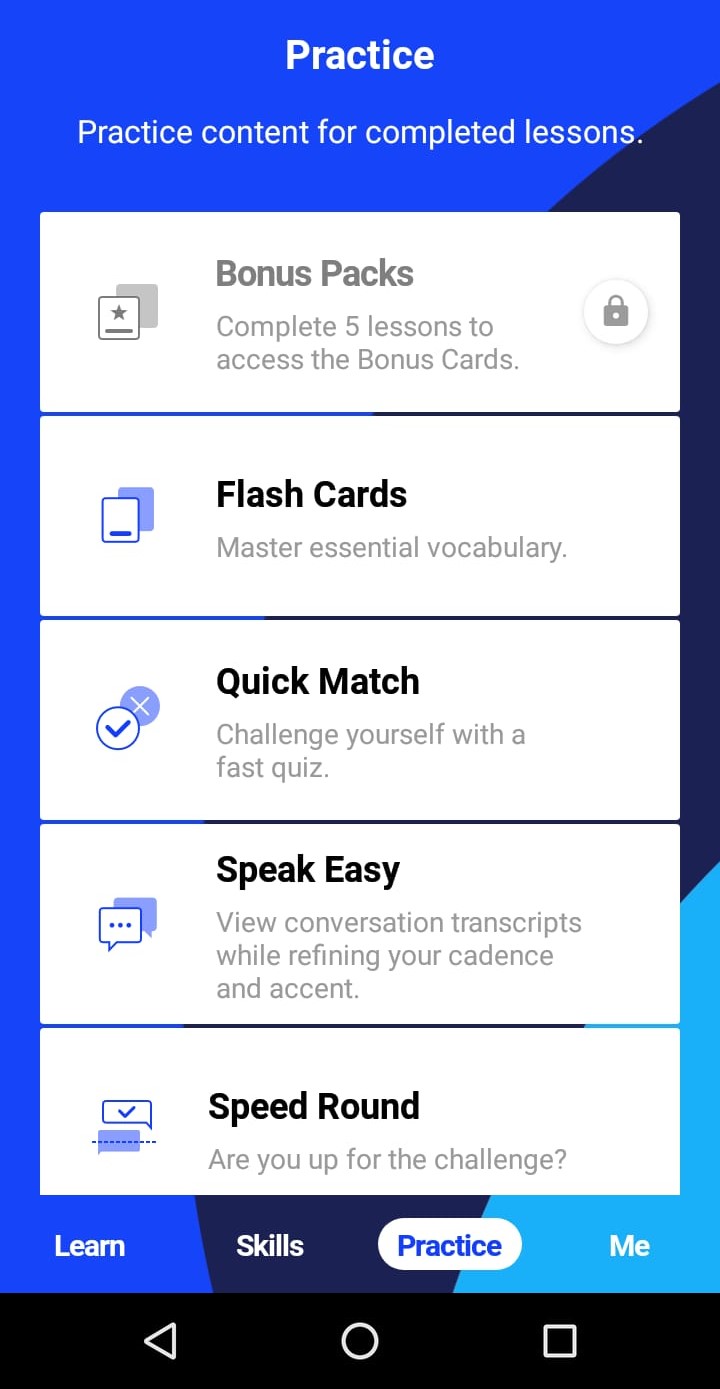
The last section of the Premium course is the one where you can finally practice what you’ve learned. Better late than never!
This section is divided into five subsections:
Reading
I was a bit lost when I first accessed the Reading subsection. The words aren’t related to the audio lessons, and they aren’t even translated. What kind of reading is that?
However, after listening to the presentation of the subsection, it kind of made sense.
Level 1 of the course doesn’t include real reading. Full sentences are included later on.
Instead, it’s an introduction to the sounds and basic words of Spanish.
You’ll have individual words and phrases read by a native speaker and you’ll have to repeat them, listening carefully to the English instructions each of them includes.
The goal is to teach you how to pronounce Spanish correctly, first by working on the sound of individual letters, then letter combinations and, finally, phrases and sentences.
Flashcards
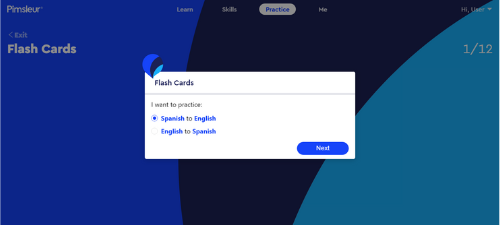
The Flashcards subsection is basically that: flashcards.
You choose which language you want to see first (English or Spanish), and then you get flashcards with the core vocabulary of the lesson you’re doing.
Each flashcard includes the native pronunciation of the word.
For this one, I’d recommend comparing Pimsleur flashcards to other popular flashcard apps. For instance, the multimedia flashcards on the FluentU app include image and video, as well as text and audio, to get vocabulary to really stick.
Quick Match
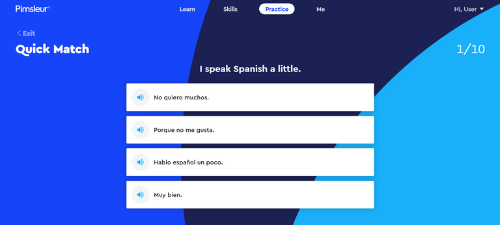
This exercise consists of 10 English sentences for which you’ll have to choose the Spanish translation among four possible answers.
The sentences are taken from the lesson’s dialogue, and you can listen to each of them before choosing your answer.
Speak Easy
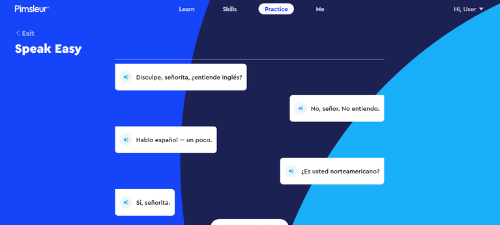
This subsection is supposed to improve your Spanish pronunciation, rhythm and accent, but I find it a bit underwhelming.
What you actually get is a fragment of the lesson’s dialogue divided into sentences.
You have to listen to each sentence and repeat it after the audio.
It’s a bit like Spanish shadowing, except it’ll only take you a couple of minutes to complete the task.
To make the most of it, be sure to pay very close attention to the audio and mimic as many of its nuances as possible.
Speed Round
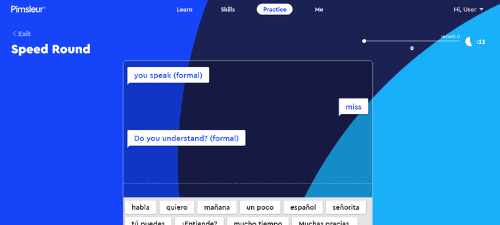
I recommend you only access Speed Round after you’ve completely digested the whole content of the lesson because this exercise can be a bit stressful.
You’ll see words and phrases falling down your screen and you have to choose their translation among the choices you’re provided.
I don’t fancy playing against the clock, so this subsection is my least favorite.
However, I admit it’s a good way to really test yourself and see whether you’ve mastered the lesson or not.
You’ll need to be able to think on the fly when having actual conversations in Spanish, so this feature gives you a chance to improve your skills in that regard beforehand.
Bonus Packs
Every five lessons you complete grant you a free additional deck of 30 flashcards to improve your vocabulary even further.
There are a total of 180 additional words/phrases per level.
Pimsleur in a Nutshell: Pros & Cons
Though there are lots of commendable features, even those that had sponsored reviews said that this is a very expensive program.
Pros of Learning Spanish with Pimsleur
- Grammatical concepts are acquired naturally through conversation
- Accent and pronunciation are highlighted
- Good for developing listening skills
- Dialogues by native Spanish speakers
- Features core vocabulary that’s used most in real life
- Effective for absolute beginners with no prior knowledge of Spanish
Cons of Learning Spanish with Pimsleur
- Writing is overlooked
- Very expensive courses
- Too much English and very little Spanish
- Repeating syllables and single words time and time again can get boring
- Little content for upper-intermediate and advanced learners
Pimsleur Spanish Versus Other Language Programs
All language learning programs have their advantages and drawbacks, so I thought I’d compare Pimsleur Spanish with some of the most popular language programs available today. Here’s how they match up:
Pimsleur vs. FluentU

Since one of the features I most missed while using Pimsleur was video, I wanted to start this comparison section with FluentU, which has video at the heart of its program.
I don’t know how many times I’ve heard from foreign friends (non-native English speakers) who’ve told me that they learned English through watching movies (and TV shows and skateboarding videos, etc.). In fact, I’ve heard it so many times, I definitely believe it.
FluentU works really well for me because I’m a person who really likes to watch movies, TV, music videos, news and vlogs on YouTube already. So it feels like a really sustainable and fun way to learn and review a language and it’s worked really well for me.
I find myself spending hours on FluentU, all while feeling engaged, while 30 minutes sometimes felt like a lot on Pimsleur because of its dryer learning style.
Overall, I’d choose FluentU here, but I really think FluentU and Pimsleur would complement each other nicely, and the cost would still be pretty affordable. If you pay the annual route for FluentU, you could have both programs for about $40 a month.
Pimsleur vs. Duolingo

I mentioned Duolingo in this review because one of the elements that I was missing the most while using Pimsleur was the fun colors and other visual elements like illustrations that Duolingo has. Comparing Pimsleur to Duolingo, Duolingo also has some (actually way more) unusual languages, with choices such as Finnish, Hawaiian, Navajo, Ukrainian and Hebrew.
I think that Duolingo is more fun and more gamified, and that cute little bird is always encouraging you (some would say pestering you), but for more serious types, Pimsleur might feel like a better fit.
Here’s our full review of Duolingo.
Pemsleur vs. Drops

I figured Drops would be good to compare to Pimsleur because it’s also a spaced repetition vocabulary app.
Drops is more gamified-feeling than Pimsleur and it doesn’t feel like a holistic learning program; rather it’s a supplementary app that you can use in addition to whatever main program you’re using.
Drops limits each session to five minutes, and if you want premium content (anything above beginner level), it actually costs just slightly less than Pimsleur at $13 per month.
Overall, I’d choose Pimsleur in this match-up. You get the vocabulary plus a bunch of other stuff for a lower price.
Here’s our full review of Drops.
Pimsleur vs. Rosetta Stone

Rosetta Stone has those vivid photographs that really make a huge difference for me.
While Rosetta Stone teaches words and phrases in context like a native speaker would learn their own language, Pimsleur uses more English and explicit explanations of grammar and translations of words, phrases and sentences.
This, for me, makes Pimsleur more of an “adult” language learning program. You can immerse yourself in your target language, but you can also get an explanation of why something is the way it is. I like that personally, since I’m not actually a child.
Here’s our full review of Rosetta Stone.
Pimsleur vs. SpanishPod101
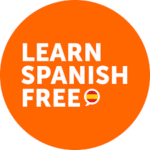
If what you’re looking for is a comprehensive method to learn Spanish, you’ll have to look elsewhere for something more holistic like SpanishPod101.
SpanishPod101, which is basically free (the Premium membership tiers are $5.50-$12.50 per month), also focuses on audio learning, but they’ve branched out into video now, too, which gives it a leg up on the Pimsleur approach.
They also offer personal teachers via instant message, which really helps when you want personalized feedback to see how well you’re progressing.
Here’s our full review of SpanishPod101.
How Much Does Pimsleur Spanish Cost?
To make sure Pimsleur is a good fit for you, I recommend that you take advantage of Pimsleur’s 7-day free trial. After the trial, the program costs:
- Pimsleur Spanish Audio Only is $14.95 per month.
- Pimsleur Spanish Premium is $19.95 per month. Premium includes additional interactive tools.
- Pimsleur All Languages Premium version is $20.95 per month.
Who Is Pimsleur Best For?
- I recommend Pimsleur for people who are just starting to learn Spanish or have a very rudimentary knowledge of it. Although levels 4 and 5 can be used by pre-intermediate and intermediate students as a refresher course.
- People who prefer or learn best by listening to audio are the obvious target of this course. However, bear in mind most of the language you’ll hear is English, with Spanish scattered along the way.
- If you’re a commuter or spend periods of time doing tasks that don’t require your full attention, Pimsleur is a good option for you.
The Verdict: Is Pimsleur a Good Method to Learn Spanish?
The short answer to this question is: It depends on what you want to achieve.
If your goal is to learn a bit of Spanish before you travel to a Spanish-speaking country or you need a quick way to become conversational in Spanish, then Pimsleur is a great method.
If, on the other hand, you need to really learn Spanish and you’re looking for a comprehensive language-learning program that covers all four basic language skills, look somewhere else or complement this method with other resources.
The excessive amount of English, the lack of actual reading and writing practice and the high price of this method are things you should definitely bear in mind before buying Pimsleur.
However, I must take into consideration there are many types of learners, and I understand this method is so popular for a reason: It’s the perfect method for audio learners.
So, all things considered, I can confidently label this one “Franko approved.”
And One More Thing…
If you’ve made it this far that means you probably enjoy learning Spanish with engaging material and will then love FluentU.
Other sites use scripted content. FluentU uses a natural approach that helps you ease into the Spanish language and culture over time. You’ll learn Spanish as it’s actually spoken by real people.
FluentU has a wide variety of videos, as you can see here:
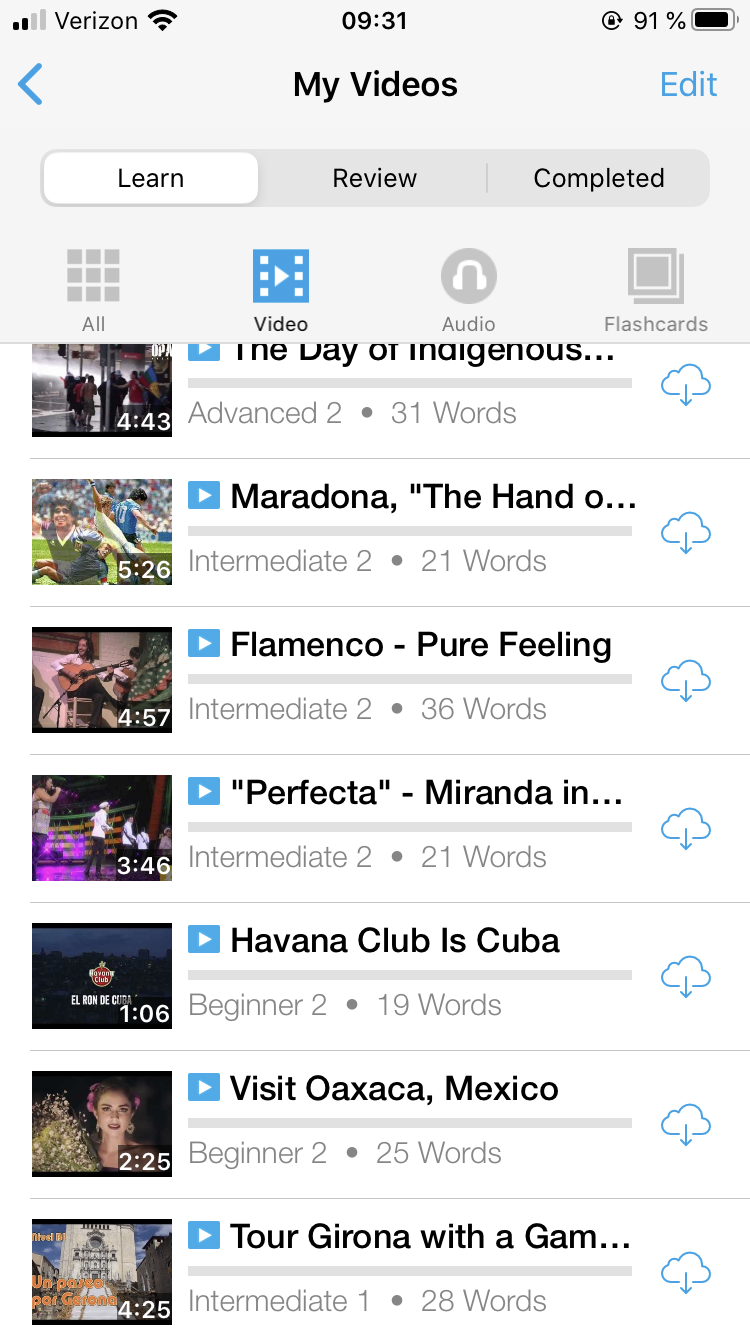
FluentU brings native videos within reach with interactive transcripts. You can tap on any word to look it up instantly. Every definition has examples that have been written to help you understand how the word is used. If you see an interesting word you don’t know, you can add it to a vocab list.
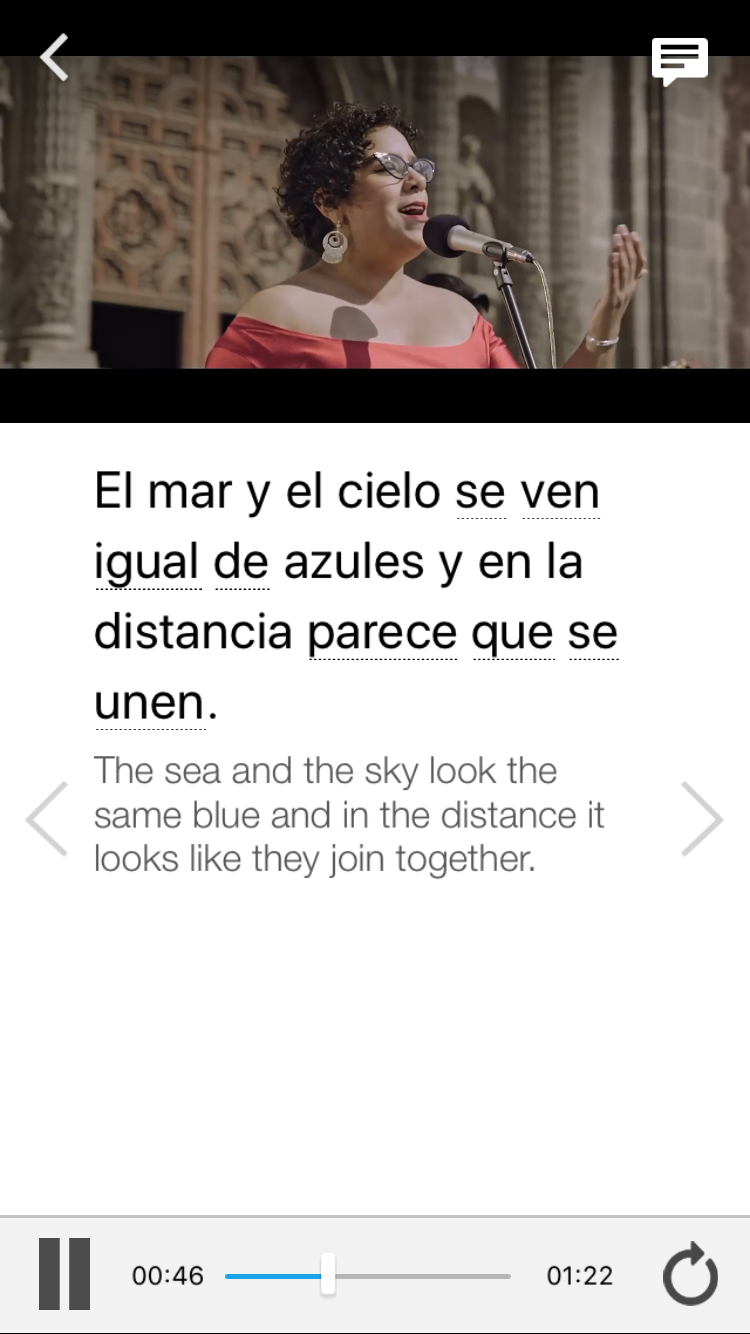
Review a complete interactive transcript under the Dialogue tab, and find words and phrases listed under Vocab.
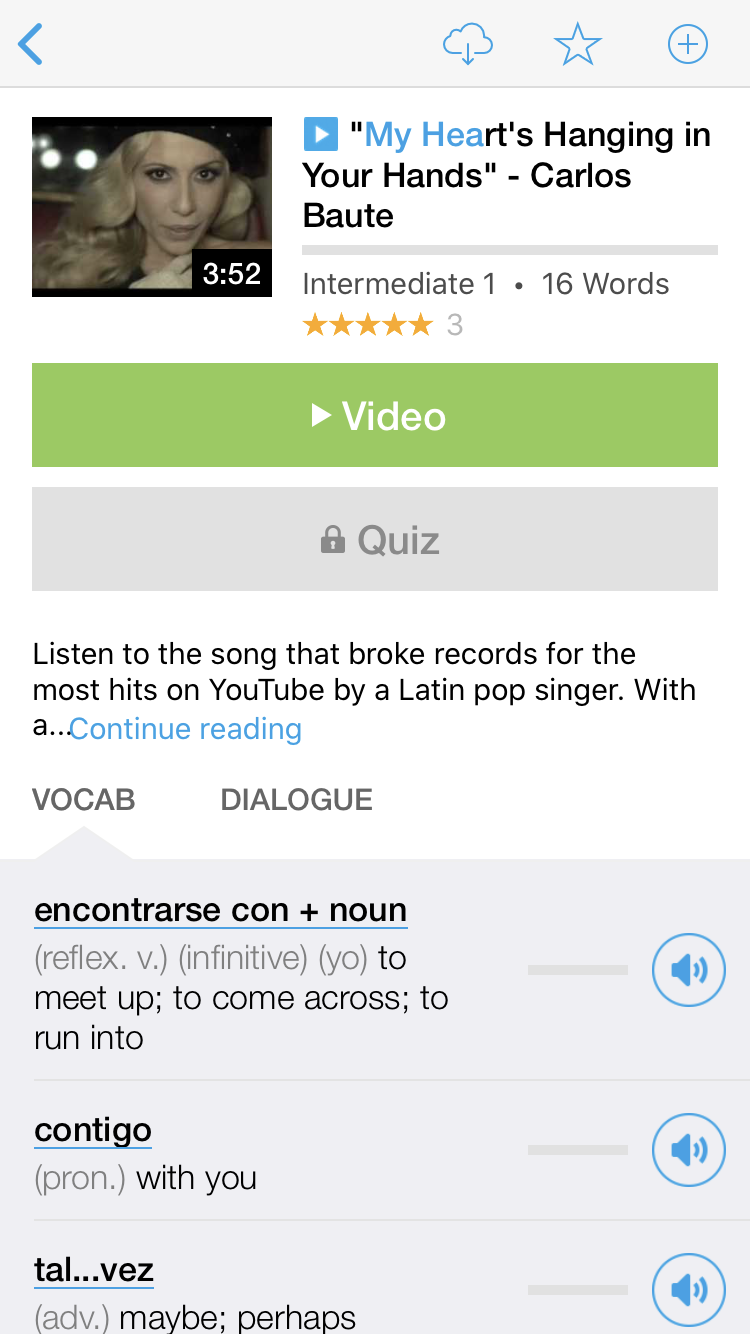
Learn all the vocabulary in any video with FluentU’s robust learning engine. Swipe left or right to see more examples of the word you’re on.
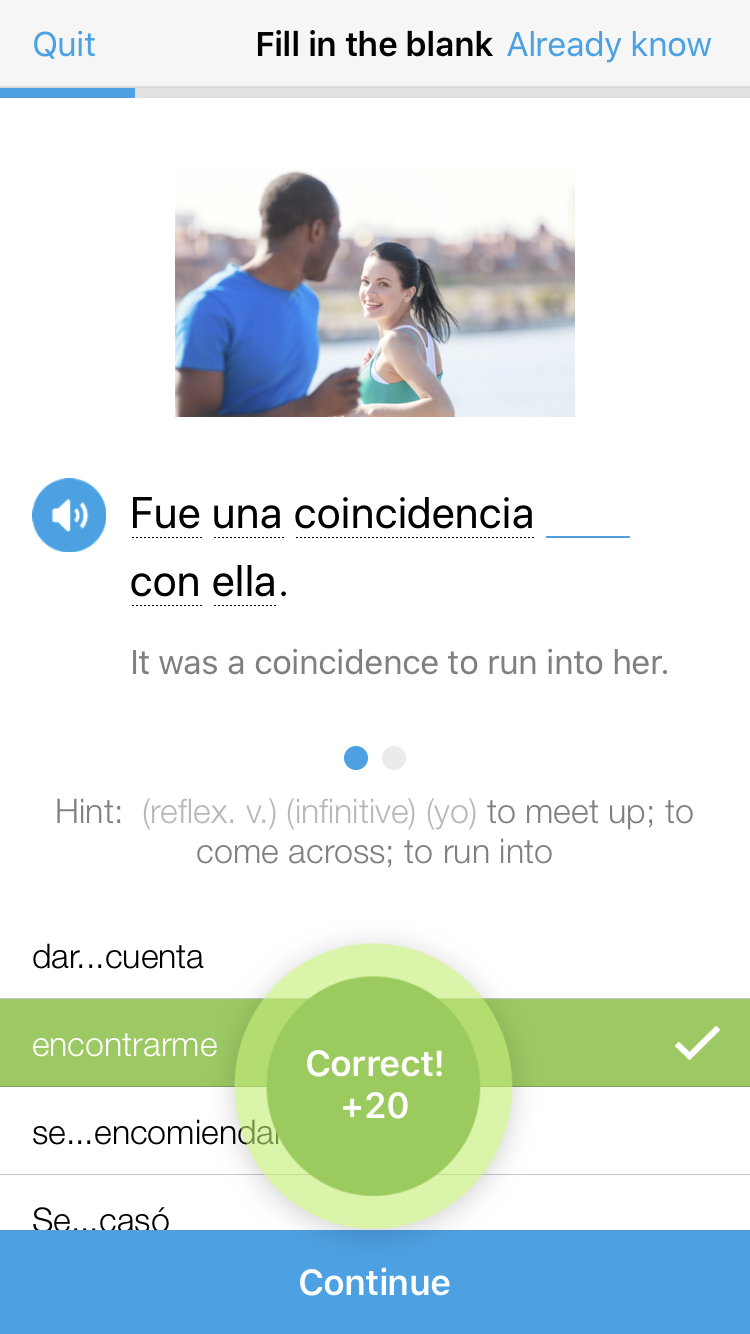
The best part is that FluentU keeps track of the vocabulary that you’re learning, and gives you extra practice with difficult words. It’ll even remind you when it’s time to review what you’ve learned. Every learner has a truly personalized experience, even if they’re learning with the same video.
Start using the FluentU website on your computer or tablet or, better yet, download the FluentU app from the iTunes or Google Play store. Click here to take advantage of our current sale! (Expires at the end of this month.)


